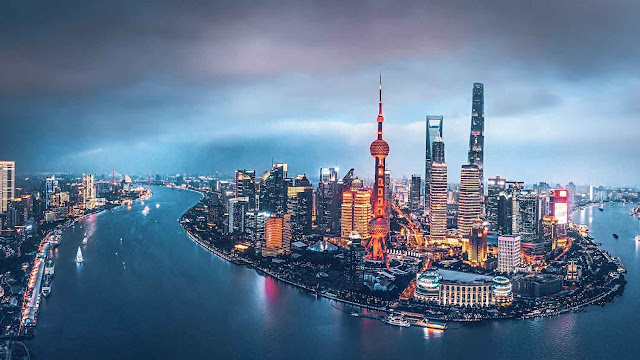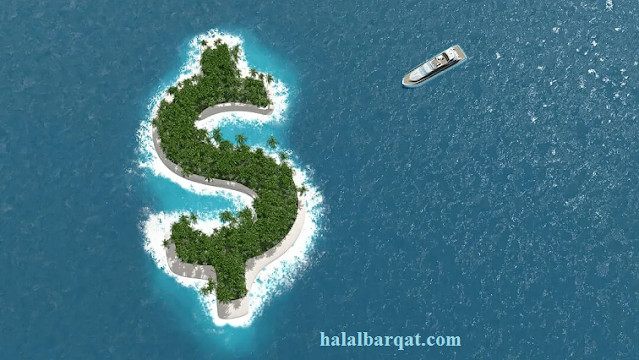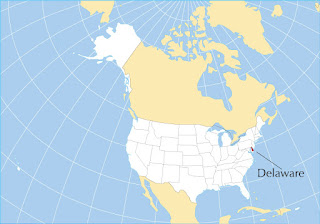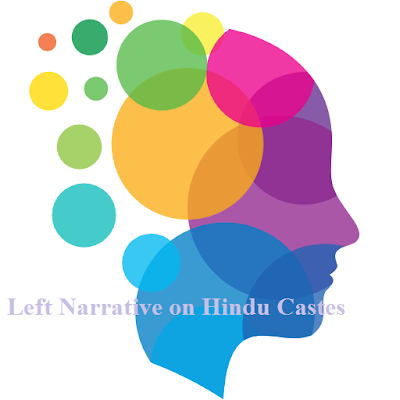Tax Havens Around the Globe
The high-profile global minimum corporate tax negotiation has
ushered in important progress. The Organization for Economic Cooperation and
Development (OECD) announced on July 1 that 130 countries and jurisdictions
around the world have agreed to set the global minimum corporate tax rate at
15%. As a result, these well-known tax havens, including the Cayman Islands,
Bermuda, and Luxembourg, will lose the advantages of low-tax policies.
What is Tax haven?
Let's take a closer
look at what a "tax haven" is, and how it formed in history and its
causes and processes.
In response to the pressure exerted by major global
economies and international organizations, let's take a look at the "tax
haven". How Heaven" responds.
“It’s a Caribbean paradise, the Cayman Islands, with sun,
sea and cocktails, but a few other things like, a lot of money, big
corporations and zero taxes.”
This is a narration from Britain's Trillion Pound Island-
Inside Cayman, a high-scoring BBC documentary, Uncovering Cayman. When local
residents were asked "Why is Cayman Island so rich without any
industry", whether it was a taxi driver, a real estate agent, or the heir
to the lord of the manor, they all answered in unison and proudly: (Cos Cayman is the Tax Heaven.) "Because
this place is Tax haven!"
What is a tax haven according to the Organisation for
Economic Co-operation and Development (OECD)?
As per OECD a country can be called a
"tax haven" if it facilitates non-resident taxpayers and becomes a
place for non-resident taxpayers to evade taxes in the country of their
residence.
The main reason for its formation is that in the process of economic
globalization, the "offshore financial market" avoids heavy taxation
and avoids supervision.
Related to tax havens, let's take a look at
"offshore"
"Offshore company" means that the investor's
company is registered in an offshore jurisdiction, but the investor does not
need to be there in person, and the company's business can be carried out
directly anywhere in the world. Generally speaking, the main purpose of setting
up a company in an offshore center is to avoid tax.
The reason why this type of
offshore center is also called a "tax haven" is because it is
different from the commonly used practice of levying taxes on the company's
turnover or profit.
Jurisdictional governments only charge an annual management
fee to offshore companies, and beyond that, no taxes are levied.
What are the characteristics of tax haven?
After understanding the related concepts of "tax
haven" and "offshore", let's look at the characteristics of tax
haven.
The International Monetary Fund has launched an investigation project to
evaluate "tax havens".
The survey report summarizes the overall
situation of global tax havens and so-called offshore financial centers with
three characteristics:
I. Financial institutions in these countries mainly
engage in business with non-local residents
II. The external funds and liabilities of these economies
are much higher than the internal funds and liabilities.
This feature is obviously
directly related to Article
1. When your customers are mainly non-local
residents, the natural amount of external funds greater than the amount of
internal funds;
III. All of these so-called financial centers offer low (or
zero) taxes, light financial regulation, and strictly confidential banking
information
Similar to the Cayman Islands, there are many offshore
financial centers called "tax havens" in the world. They are either
located in the vast sea, or they are unique around big countries and mainstream
tax systems, mainly including the British Virgin Islands, Bahamas, Bermuda,
Seychelles, Samoa, Isle of Man, as well as Luxembourg, Ireland, Belgium,
Austria, etc.
According to the survey and statistics of the Tax Justice
Network, a British research institution, the total assets transferred to tax
havens by major countries in the world for tax avoidance are about 21 trillion
US dollars (the cumulative total of asset transfers from 1970 to 2010),
accounting for the global wealth. 8% of the total.
Offshore financial centers
Today, the economic scale of "offshore financial
centers" has grown to an extremely large scale.
The economic strength of
these regions (at the reporting level) even exceeds the GDP of many countries,
becoming a force that cannot be ignored in the global economy.
Cayman Islands
Taking the Cayman Islands as an example, the land area is
only 264 square kilometers, about a quarter of that of Hong Kong.
The total
population is only 64,174, and the per capita GDP is as high as 85,477 US
dollars, far exceeding the minimum standard of developed countries (12,055 US
dollars) (reference World Bank 2018 data).
Such a wealthy "small
land" is the fifth largest financial center in the world after London, New
York, Hong Kong and Tokyo. There are more than 100,000 companies registered on
the island (far more than the population), including more than 700 banks, more
than 800 insurance companies and nearly 10,000 hedge fund institutions.
With more companies registered than the local population, why
is the Cayman Islands a “tax haven”?
You may have heard of the Cayman Islands, a world-renowned
tourist destination with some of the best diving experiences. In the Caribbean
waters where the poor are rife, the Cayman Islands are incomparably rich.
The
residents of the island are all rich, and the per capita annual income in 2020
is as high as 85,000 US dollars, which is about 530,000 yuan.
Financial services and tourism are the main sources of local
economic income. Since many countries around the world have registered
companies here, the Cayman Islands has also become the fourth largest offshore
financial center in the world.
Coupled with various preferential and loose
policies, the Cayman Islands is also known as a "tax haven". Why?
The old rules, I would like to ask you readers to use your
little hands to make a fortune, give the author a free like and follow, thank
you.
Let's start with an introduction to the Cayman Islands. The
Cayman Islands is a British Overseas Territory consisting of three islands.
They are Grand Cayman, Little Cayman and Cayman Brac.
Due to its remote location, the society of the Cayman Islands
has been very stable and harmonious since the national liberation in 1835. With
the development of the times, the Cayman Islands has gradually become a
"tax haven".
According to relevant statistics, the population of the
Cayman Islands is 64,000, but the number of companies registered on the island
has exceeded 100,000, which is much larger than the local population. As for
the reason why the company is registered here, everyone must understand that it
is for tax avoidance.
The reason why the Cayman Islands is a "tax haven"
is that the local laws and policies on taxation are very loose. There is no
direct tax, that is, personal income tax, property tax, corporate income tax,
etc.
How to avoid tax through Cayman Islands?
To give a simple example, Company A
registered subsidiary B in Cayman, and Company C asked Company B to buy 1
million goods.
Assuming that the profit is 200,000 yuan, then company B will
only pay 800,000 yuan (cost) to parent company A, and then company A will ship
the goods directly to company C.
After the transaction was completed, the operating income of
Company A was only 800,000 (originally 1 million), and the income tax of
200,000 was reduced. However, due to the tax exemption of the registered place
of company B, the income of 200,000 does not need to be taxed, and it is
actually packed into the pocket.
When a company is large enough, this tax
avoidance method can save a lot of operating costs.
In 2015, the State Administration of Taxation calculated a
set of figures that each year, the amount of tax lost due to "tax
havens" exceeded 30 billion yuan. In the US, the figures are even more
exaggerated.
U.S. tax law requires companies to pay a minimum tax of 21% on their
foreign profits. But a song through the practice of overseas tax avoidance,
three years to avoid 3.1 billion US dollars in taxes.
Therefore, the tax-free policy of the Cayman Islands has
attracted many foreign companies to register companies here.
A company registered
locally is an offshore company, that is, such a company is registered in
Cayman, but does not carry out substantial business here.
The reason for the tax exemption of the Cayman Islands has to
start with a shipwreck.
In 1794, a British fleet ran aground near the Cayman
Islands. The islanders rescued the crew, who happened to be a member of the
British royal family.
In order to thank the islanders for their kind deeds, the
then British King George III ordered the residents of the Cayman Islands to not
pay taxes and join the army.
By 1978, the United Kingdom issued a Royal Decree
permanently exempting the Cayman Islands from tax obligations.
Moreover, for exempted companies registered in the Cayman
Islands that do not conduct business on the ground, Cayman provides a guarantee
of no income tax for 20 years.
Exempted trust companies can obtain a guarantee
of no income tax for 50 years. At the same time, registration in the Cayman
Islands is also more conducive to the listing of enterprises.
Coupled with less
foreign exchange controls, more and more companies are going to Cayman to
register.
Of course, it should be reminded that there are indeed some
reasons why companies are registered in the Cayman Islands to avoid tax, but
for some companies, tax avoidance is not necessarily the main reason. For
example, some companies put their registration in the Cayman Islands mainly for
the convenience of listing.
Also, being registered in the Cayman Islands does not mean
that the company or business is foreign.
Because their main business is still
in their own country, they are still regarded as domestic enterprises.
Delaware
Back to its roots: Delaware was the earliest modern tax haven
Such a huge "tax avoidance" economic system is by
no means achieved overnight, and the source of their formation is obviously not
these small island countries on the ocean, but from two mainstream capitalist
countries, the United Kingdom and the United States.
After the second industrial revolution, the economies of old
capitalist countries such as Britain and France gradually declined, and the
American economy began to rise.
By the end of the 19th century, the total
industrial output value of the United States had jumped to the first place in
the world, and private enterprises had also developed by leaps and bounds.
But
many American businesses face the painful reality that corporate taxes are too
high.
These external environments created the world's earliest modern tax haven
- Delaware, USA.
In 1898, the eastern state of Delaware was facing financial
difficulties for the government, so the state passed legislation that greatly
reduced the corporate tax and business tax for companies registered in this
state.
The state government hopes to attract foreign companies to register
through this method, thereby creating growth points for the local economy and
solving the government's financial difficulties.
Once this act was promulgated, a large number of companies
poured into Delaware registered companies, and Delaware also tasted the
sweetness.
By 1902, Delaware registered companies reached 1,407, and by 1919,
Delaware registered companies have reached 4,776, an astonishing increase at
the time. Such a policy has also opened up a new world.
Delaware attracts
foreign capital to flow to the local area by reducing taxes, thereby driving
economic development.
Since then, federal state governments in the United States
have followed the example of Delaware and used the means of reducing in-state
taxes to attract foreign capital to flow into the state, thereby driving local
economic development. This routine has far-reaching influence, and the regions
that have followed the best are also outside the American continent.
After the end of World War II, a wave of colonial
independence broke out in the world, and many British and French colonies
demanded independence one after another.
Its huge momentum forced the colonial
suzerain countries such as Britain and France to follow the trend of history
and agree to the independence and sovereignty of these colonies. However, these
colonies are usually remote, resource-poor and sparsely populated island
countries (the colonies located in the mainland area broke away from colonial
rule very early).
Delaware's strategy for attracting foreign investment to
develop its economy. After gaining independence, the new government passed
legislation, which greatly reduced local corporate taxes and various taxes,
attracted capital to flow into the local area, and promoted local economic development.
In short, the late 19th century and the middle of the 20th
century, these two time points greatly promoted the formation of global tax
havens.
The two then continued to converge, so that they finally reached a very
large economic scale.
The development trajectory of most “tax havens” is that
the colonies first gained sovereign independence from the suzerain, and then
local legislatures passed legislation conducive to capital tax avoidance,
enabling these regions to facilitate tax avoidance and cross-border capital
flow.
Based on the principles of modern international law,
independent sovereign countries make laws, and no other country in the world
has the right to interfere, and this "principle" has also become an
umbrella for tax havens. With the development of the global economy, more and
more enterprises have gradually developed into multinational companies, and the
flow of funds between countries has further promoted the development of
"offshore financial centers" and "tax havens".
Condemnation and 'encirclement'
'Even if it's not the
biggest office building in the world, it's the biggest tax loophole in the
world'
Low tax rates or even zero tax rates have promoted the
economic development and cross-border capital flow of the "tax haven"
countries, but they have also eroded the fiscal revenue of the profit-seeking
countries for multinational corporations.
Research by the OECD shows that
global multinationals place 25 percent of their profits in low-tax countries,
and the proportion of U.S. multinationals is even higher, rising from 30
percent around 2000 to 60 percent in 2019.
Former US President Barack Obama "named" the Ugland
House in the Cayman Islands in a speech, a 5-story office building located on
South Church Street in the Cayman Islands, but provided office addresses for
18,857 companies ). He said: "During the campaign, I expressed indignation
at the small building that was regarded as its own headquarters by tens of
thousands of companies. I have said before that even if it is not the largest
office building in the world, then he is The world's largest tax
loophole." Obama said he would resolutely crack down on offshore tax
avoidance and increase revenue for the US government.
On September 15, 2008, Lehman Brothers, the fourth largest
investment bank in the United States, fell into a serious financial crisis and
announced to apply for bankruptcy protection, which marked the advent of a more
serious financial crisis after the subprime mortgage crisis in the United
States surfaced in February 2007. This also triggered a global financial
crisis.
When various governments explored the cause of the crisis,
they found that although "tax havens" were not the root cause of the
financial crisis, they provided many convenient conditions for the
international flow of speculative funds, which was one of the reasons for the
instability of the financial system, but also contributed to the emergence of
the financial crisis.
After this, international organizations and governments of
various countries have made heavy efforts to "encircle and suppress"
tax havens.
In April 2009, at the G20 summit held in London, the tax reform and
related information disclosure of "tax havens" became an important
part of the research of the leaders.
Leaders agree to take action against
uncooperative tax havens and prepare to impose sanctions.
Multilateral Convention on Mutual Assistance in Tax Collection and Administration
At the subsequent international conferences, the G20 and the
OECD coordinated countries to issue the Multilateral Convention on Mutual
Assistance in Tax Collection and Administration.
In order to prevent
multinational companies from using "tax havens" to evade taxes.
At
present, 113 countries and regions around the world have joined the Multilateral
Convention on Mutual Tax Administration, including 15 non-independent sovereign
jurisdictions (such as the Cayman Islands, British Jersey, British Virgin
Islands, etc.).
In 2014, the OECD released the Standard for the Automatic
Exchange of Financial Account Tax-Related Information.
As of June 30, 2017,
more than 100 countries or regions, including China, have pledged to implement
the standard for automatic exchange of tax-related information on financial
accounts, and 96 countries have signed exchange agreements.
Bermuda,
Switzerland, the Cayman Islands, the Virgin Islands, the Isle of Man, Cyprus,
and Jersey have already exchanged information in 2017, while Malaysia,
Singapore, and the Bahamas have also exchanged tax information in 2018.
OECD/G20 Inclusive Framework (Inclusive Framework)
In 2016, the OECD/G20 Inclusive Framework (Inclusive
Framework) composed of nearly 140 economies, including China, was established
to participate in the standard setting and content of "Base Erosion and
Profit Shifting" (BEPS, Base Erosion and Profit Shifting). implement.
During 2018-2020, the Inclusive Framework launched a "twin-pillar
study" to address tax challenges in the digital economy.
Pillar 1, expand
the "tax linkage" rules to clarify the scope of corporate income tax
collection, tax calculation and distribution in the context of the digital
economy.
The second pillar, the lowest corporate income tax rate in the world,
is the expansion of the “tax haven” that the OECD has been insisting on.
Requirement of economic substance
Under pressure from the international community, some
countries or regions known as "tax havens" have also introduced
countermeasures. For example, at the end of 2018, jurisdictions such as the
British Virgin Islands, the Cayman Islands, Guernsey, and Bermuda have
announced new economic substance bills, which put forward “economic substance”
requirements for companies registered or operating in the region (that is, the
operating activities, not shell companies).
In addition, in February 2019, the Cayman Islands announced
the "Guidelines for the Implementation of Cayman's Economic Substance".
For those shell companies that cannot meet the economic substance requirements,
they will be fined, forced to cancel, or exchange information directly to the
relevant government tax Organs.
False declarations or misleading statements
will be fined or the person responsible will be held criminally responsible.
Where do tax havens under the global tax agreement go?
The new crown epidemic has caused a serious impact on the
global economy. The economy determines the government's fiscal revenue. As one
of the important sources of fiscal revenue, the government can properly guide
and adjust the operation of the social economy by using tax levers.
On March 31
this year, the Biden administration pointed out in the "Made in the United
States Tax Act" that it will mainly raise corporate income tax to raise
funds for infrastructure plans.
Although the relevant tax increase clauses in
the bill were not passed, the United States took the lead in "tax
increase". It has become very obvious and is considered to be the catalyst
for a new round of global tax hikes.
G7 proposal for the lowest global corporate tax rate
Highlights of the G7 proposal for the lowest global corporate
tax rate in June include:
i. Vigorously support the "dual-pillar" efforts
under the current G20/OECD inclusive framework. Pillar one is to address the
tax challenges brought about by globalization and the digital economy, and
pillar two is to introduce the lowest corporate income tax rate in the world.
ii. For Pillar One, reach consensus on the allocation of
taxing powers and remove all existing Digital Services Taxes and similar
arrangements while introducing new international taxation rules;
iii. For Pillar Two, commit to a minimum global corporate
tax rate of at least 15%.
iv. It is crucial to clarify that the two-pillar
negotiations go hand in hand and hope to reach an agreement at the G20 Finance
Ministers and Central Bank Governors meeting in Venice on July 9-10.
If the agreement is implemented, in theory, the "tax
haven" will cease to exist. Because under this premise, once the tax rate
paid by a company in a country is lower than the minimum tax rate, the
government of the country where its headquarters is located can require it to
pay tax based on the minimum tax rate level. For example, if the Cayman Islands
still implements a zero tax rate, even if a company headquartered in the United
States goes to the Cayman Islands to register, it still has to pay a 15% tax to
the U.S. government.
If the company chooses to pay a tax rate of 12.5%
Ireland pays tax, it needs to pay the remaining 2.5% to the United States.
In response to the bill, some low-tax countries immediately
raised objections. Irish Finance Minister Donoghue once said, "We have
very significant reservations about the lowest global tax rate at this level,
which means that only certain countries, certain economies of size can profit
on this basis, and we have Strong concern."
Mathew Gbonjubola, Nigeria's
ambassador to the OECD, also said that the 15% tax rate will not help African
countries very much and is likely to bring about tax base erosion.
According to the Financial Times, tax havens and
investment hubs such as Ireland, Switzerland and Barbados are widely expected
to reject the deal. It can be seen that this historic agreement has indeed
caused a big blow to the “tax havens” with low or zero tax rates.
The good days
of scouring the wool of a big country may be gone forever, and blind resistance
is tantamount to hitting a stone with an egg.
Only by embracing change,
carrying out domestic tax system reform, and promoting the transformation of
economic growth mode is a better way out.
Many large companies are registered in "tax
havens", why does the country not restrict them? Can small companies
learn?
As an important source of the country's economy, tax has
always been a key factor in measuring the country's economy, and tax evasion is
strictly prohibited for the country. It is precisely because of this that how
to reasonably avoid taxation to avoid this situation has become the goal of
large companies.
But there is such a place on earth, which is called a tax
haven. Many large companies in our country have registered here, and many
well-known companies in the world have also settled here. This place is the
Cayman Islands. So why is the well-known tax haven not restricted by the state?
Can smaller companies follow this model?
1. The "tax haven" Cayman Islands
The Cayman Islands and the surrounding areas in the Caribbean
Sea are particularly special. Compared with ordinary people, the Cayman Islands
is an excellent tourist attraction, especially the local water is clear and
transparent, which is very popular among diving enthusiasts. And the per capita
annual income of the Cayman Islands far exceeds that of neighboring countries
and regions, all of which benefit from the status of the "tax haven"
of the Cayman Islands.
The main income of the Cayman Islands is tourism and
financial services, and the prosperity of the financial services industry is
also the reason why the Cayman Islands can be a "tax haven". Today,
the Cayman Islands, which has a population of only 64,000, has more than
100,000 registered companies. The reason behind this is that the Cayman Islands
is a place where taxes can be reasonably avoided.
Why is the Cayman Islands a "tax haven"?
The reason
is that the Cayman Islands does not tax everyone, and that alone has led to a
large number of companies and businesses registering here.
The reason why the
Cayman Islands will be exempted can be traced back to the 18th century, when
British expeditions ran aground near the Cayman Islands, and the residents of
the Cayman Islands rescued these people, which made the then British King
ordered to exempt Cayman.
With the end of World War II, many British colonies began to
become independent, and the Cayman Islands were more free at this time. At that
time, the global financial market was gradually rising, and the Cayman Islands
decided to attract capital to revitalize the domestic economy.
The means of
attracting foreign economies is to exempt from taxation, and it is precisely
the Cayman Islands that has become today's "tax haven".
2. Multiple companies are registered here, why does the
country not restrict it?
Today, this world-renowned "tax haven" has
attracted more than 100,000 companies to register here, many of which are
registered in the Cayman Islands. It is an island country with an area of less than
200 square kilometers and a population of less than 70,000 can actually attract
so many domestic companies to register here because of its unique tax-free
policy.
For example, Alibaba, Tencent and Baidu, the three current
domestic Internet giants, are all registered in the Cayman Islands, and the
recently very lively real estate industry, Evergrande and Country Garden are
also registered here. These companies registered in the "tax haven"
Cayman Islands, the annual loss of tax revenue to my country is as high as 40
billion yuan.
In addition to my country, many foreign companies are also
registered in the Cayman Islands, and Google can avoid tax by more than 1
billion US dollars every year through this method. So in the Cayman Islands,
which has such a big impact on state taxation, why doesn't the state restrict
it? Can a company registered in the Kaiman Islands be prohibited from operating
in the country?
In fact, not only foreign countries, but even my country has
its own "tax havens", such as Kashgar and Khorgos in Xinjiang. These
places also have policies to exempt tax. And free market trade makes it
impossible for my country to easily allow an enterprise to be prohibited from
operating in the country just because it is registered abroad. However, the
country is already making policy adjustments to prevent the loss of tax
revenue.
3. Can a small company register in a “tax haven”?
With the demonstration of large enterprises, can small
enterprises and companies follow the example of these large enterprises and
register companies in the Cayman Islands as a means of reasonable tax
avoidance? Actually the answer is yes. However, it is not recommended for small
businesses to do this because it is not cost-effective overall. To register in
the Cayman Islands, you must first apply for a bank account in the Cayman
Islands and pay various service fees.
And many large companies are registered in the Cayman
Islands, tax avoidance is only one aspect, on the other hand, they can be
registered overseas, which can be more convenient to list, so it is recommended
not to register in the Cayman Islands for small and medium-sized enterprises.
Otherwise, you may end up spending more money than you should pay in taxes,
which will outweigh the gains.
Can an Asian company registered in the Cayman Islands still
be called an Asian company?
In fact, because their business is still in Asia, they are
essentially Asian companies. At present, countries around the world are
implementing policy restrictions on the "tax haven" Cayman Islands,
and the "tax haven" may cease to exist in the future.
May Refer Also:
Lithuanina Digital Residence
E - Residency
Crypto Assets
Share this Article in Public Interest>>












